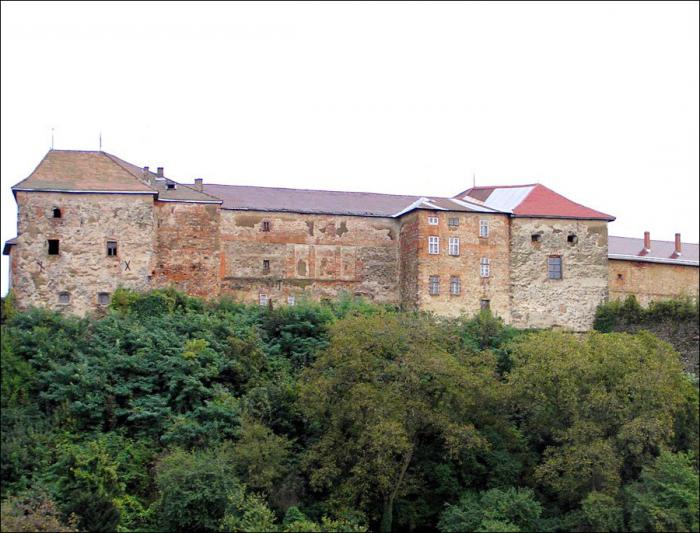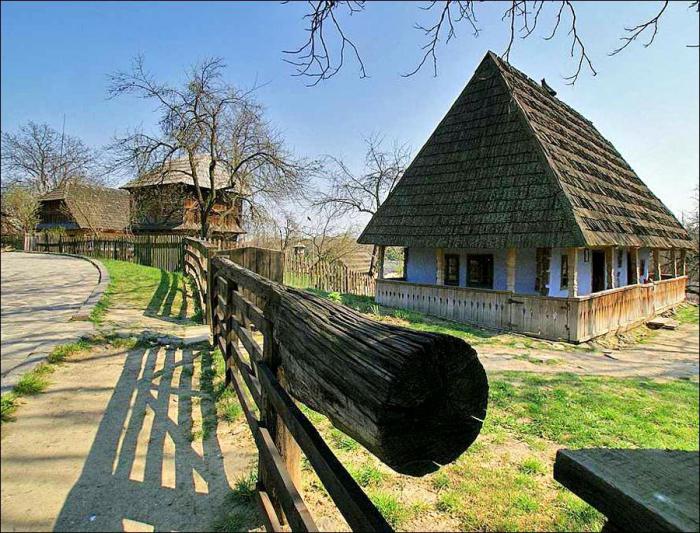Transcarpathia (Uzhgorod is considered its capital) is an unforgettable land with picturesque landscapes that attract tourists not only from all over Ukraine, but also from all over the world. This is a region with world famous mineral springs, a center of horticulture and viticulture. This part of Ukraine is called “green gold”. After all, only here there are so many forests, orchards and vineyards. Only in Transcarpathia are mountains of unprecedented beauty and mountain valleys rich in healing springs of mineral origin. And among all this splendor there is a great and ancient Uzhhorod - a city that is interesting in history, its formation and attractions.
A city with a history exceeding a thousand years
The manuscript of the Hungarian chronicler Shimon Kesai indicates that Uzhgorod was founded in 872. The current name of the city suggests that it is a settlement located above the river Uzh. The history of Uzhgorod is great, as is the city itself. This is one of the most ancient settlements of the Transcarpathian region of Ukraine. It is its historical and regional center. Urban history spans over 1,100 years. On the site of modern Uzhgorod, in ancient times, the first settlements existed. The most famous among them were those that belonged to the Slavs.
History in detail
Historically, for many centuries, three urban centers have developed - Castle Hill, Radvanka and Goryany. The ancient map of Uzhgorod is an excellent evidence of this fact. A little later, gradually, the advantage passed to a more fortified area on Castle Hill. In the ninth century, the fortified castle city turned into an early feudal settlement city, headed by Prince Laborets. In 903, the Hungarian tribes, led by the leaders of Almos and Arpad, stormed the Gungwar by storm for four days. In it, together with his warriors, the defense was held by the legendary Prince Laborets. Since the forces were unequal, the prince was defeated, and the settlement itself was burned. But after some time, the new owners have reconstructed the town. But in 1806 Uzhgorod again succumbed to the attack of Khan Kutesk. He was not destined to take the city.

In the early 40s of the 12th century Uzhgorod was again burned. In 1248, a new city was built at a new location (the modern district of Goryany). In 1290, Uzhgorod passes into power to the Ugric Chancellor Obo Omodey. At the beginning of the 14th century, the city was again severely destroyed. And in 1312 he passed into the hands of Petro Pete. In the 80s of the same century, the first school was opened in Uzhgorod.
The influence of the XIX-XX centuries on the formation of Uzhgorod
Until the beginning of the XIX century, the city was influenced by various dynasties and rulers. During this time, he was destroyed several times and reborn. He survived the times of fall and heyday. A real big city grew here , which slowly but surely developed. The 19th and 20th centuries had a great influence on its formation. Uzhgorod, whose sights can tell a lot about this time, in the 19th century succumbed to an extraordinary economic scope. Capitalism began to develop throughout Transcarpathian territory, although the first factories appeared within the framework of feudalism, so the area of the city increased several times. Already in 1837 there were 36 streets in Uzhgorod.

The Ugric revolution that took place in the middle of the 19th century had the greatest influence on Uzhgorod among all political incidents. In the 60s the first printing house with the Ukrainian font was opened here. A few years later, a sawmill, a railway station, and a furniture factory were immediately established.
The First World War slightly reduced the pace of development of the city. In 1919, the village became part of the Czechoslovak Republic. It was during this period that the city gained modern architectural perfection. In 1938, Uzhgorod was transferred to Hungary, and during the time of fascism it turned into a military camp of the Hungarian army. The Second World War did not cause significant damage to the city, but greatly changed its population. After the end of hostilities, Uzhgorod begins to gain its modern features.
The city's attractions
Such a city as Uzhhorod is simply teeming with various historical objects, architectural masterpieces, unique streets and all kinds of museums. Uzhgorod, the sights of which cannot leave anyone indifferent, boasts the Roman Catholic Church of St. George (George). This architectural monument was erected in the 17th century. It was built by Yu. Druget on the site of the Lutheran temple, which he himself destroyed. M. Bercheni - heir of Druget - was engaged in the continuation of construction work. The bell tower of the building has a clock that has been continuously working for more than a century and a half.
Another attraction that is known to every connoisseur of art is the art museum (Zhupanat House). This building dates back to the beginning of the 19th century. It is made in the style of classicism and was originally intended to host the jupanate (city authorities). Since the late 70s of the last century, the museum named after J. Bokshay has been located here.
Largest of the attractions
Ukraine, Uzhgorod in particular, is known for its castles. Each city in this country has its own royal palace, which every resident of the state can be proud of. In Uzhgorod, this attraction is special, because it has survived more than one century and managed to see a lot of interesting and unusual. The first memories of the castle date back to the ninth century. During this period, it looked like a wooden fortification. At the end of the tenth – beginning of the eleventh centuries a stone castle was built in the city. It was this building that did not succumb to the attack of Khan Kutesk.
The castle (Uzhhorod), like the city itself, passed from hand to hand. It was destroyed several times, but each new ruler reconstructed it and made changes to it. He was controlled by the Hungarians, Italians, and fascists. He endured a lot, but managed to survive and now rises above Uzhgorod as a symbol of power, power and invincibility.
Castle legends
Uzhgorod, whose sights are shrouded in legends, quietly whispers myths to its tourists, and maybe real stories related to this or that building. But the “leader” in the number of institutions overgrown with rumors is the local castle. One of them says that in the eastern part of the castle there used to be a cemetery on which Drugets, Bercheni and others are buried. And in the southern part of the building, at the time, the Drugs built a monastery for the monks of the Order of St. Paul. But this monastery has long been destroyed. On the site of both the monastery and the cemetery today is the Transcarpathian museum-skansen. And if there is a ghost, then, most likely, it appears first of all here, and then it begins to wander throughout the rest of the territory.
Castle sculpture
The courtyard of the castle is decorated with a sculpture of a wild bird - turul. Uzhgorod, the sights of which have their characteristic zest, is proud of this particular masterpiece. Indeed, for the Hungarians, this bird was a kind of heroic symbol. At the beginning of the last century, an obelisk was installed on the site of this monument, the height of which reaches 18 meters. It is adorned with a turul cast in bronze. After the Second World War, the monument was dismantled, but at the end of the 80s it was restored again. The sculpture of the turul itself was transferred to the Transcarpathian Museum of Local Lore.
Do not forget us
Uzhhorod is one of the oldest cities in Ukraine, but it is always young. He is cordial to all his guests and loves to receive them on his territory. This is a kind of "window to Europe." He endured a lot, managed to recover from seemingly incompatible wounds with life and today gives his guests warmth, beauty, peace and good mood.